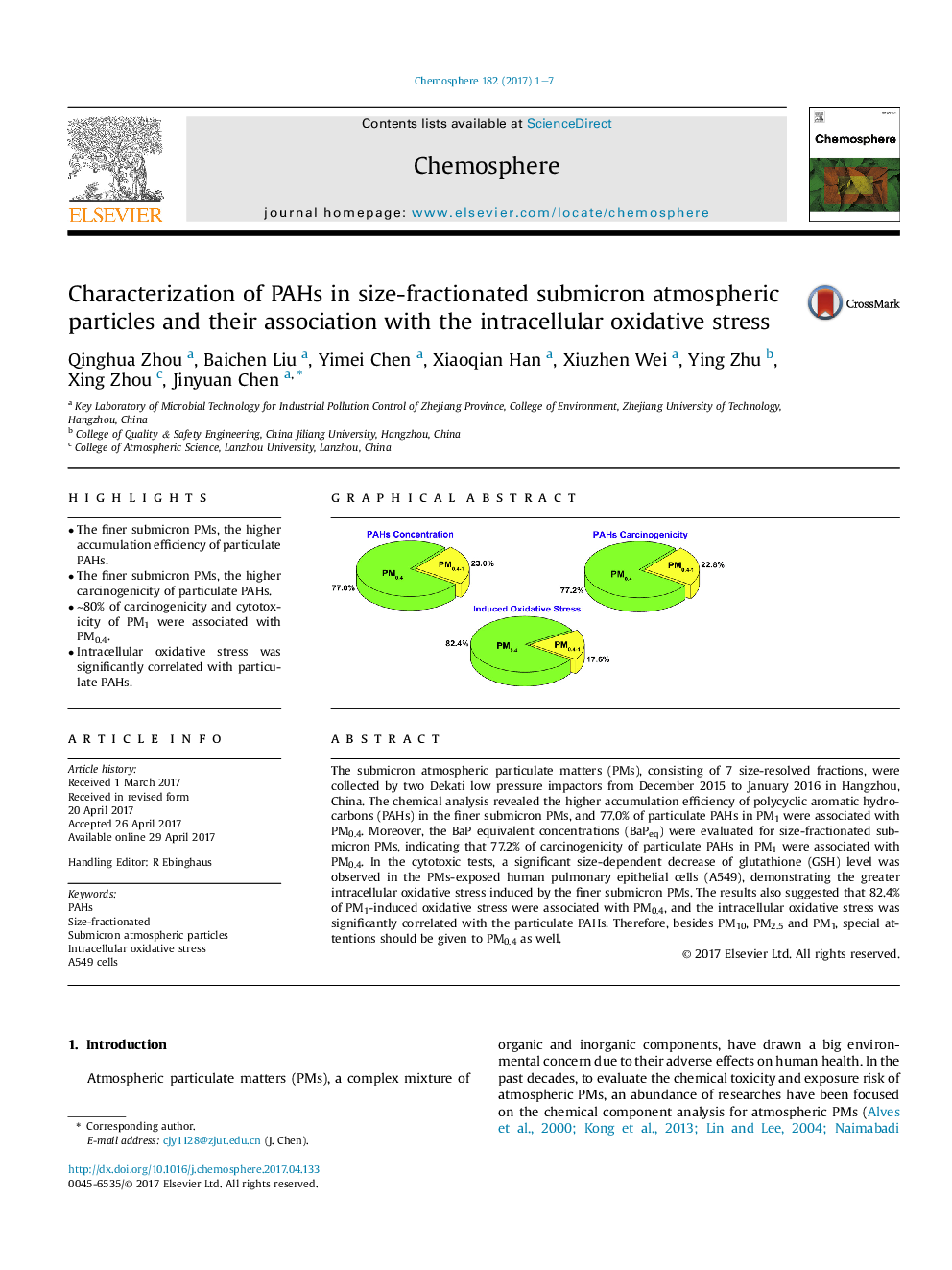| Article ID | Journal | Published Year | Pages | File Type |
|---|---|---|---|---|
| 5746876 | Chemosphere | 2017 | 7 Pages |
â¢The finer submicron PMs, the higher accumulation efficiency of particulate PAHs.â¢The finer submicron PMs, the higher carcinogenicity of particulate PAHs.â¢â¼80% of carcinogenicity and cytotoxicity of PM1 were associated with PM0.4.â¢Intracellular oxidative stress was significantly correlated with particulate PAHs.
The submicron atmospheric particulate matters (PMs), consisting of 7 size-resolved fractions, were collected by two Dekati low pressure impactors from December 2015 to January 2016 in Hangzhou, China. The chemical analysis revealed the higher accumulation efficiency of polycyclic aromatic hydrocarbons (PAHs) in the finer submicron PMs, and 77.0% of particulate PAHs in PM1 were associated with PM0.4. Moreover, the BaP equivalent concentrations (BaPeq) were evaluated for size-fractionated submicron PMs, indicating that 77.2% of carcinogenicity of particulate PAHs in PM1 were associated with PM0.4. In the cytotoxic tests, a significant size-dependent decrease of glutathione (GSH) level was observed in the PMs-exposed human pulmonary epithelial cells (A549), demonstrating the greater intracellular oxidative stress induced by the finer submicron PMs. The results also suggested that 82.4% of PM1-induced oxidative stress were associated with PM0.4, and the intracellular oxidative stress was significantly correlated with the particulate PAHs. Therefore, besides PM10, PM2.5 and PM1, special attentions should be given to PM0.4 as well.
Graphical abstractDownload high-res image (213KB)Download full-size image
